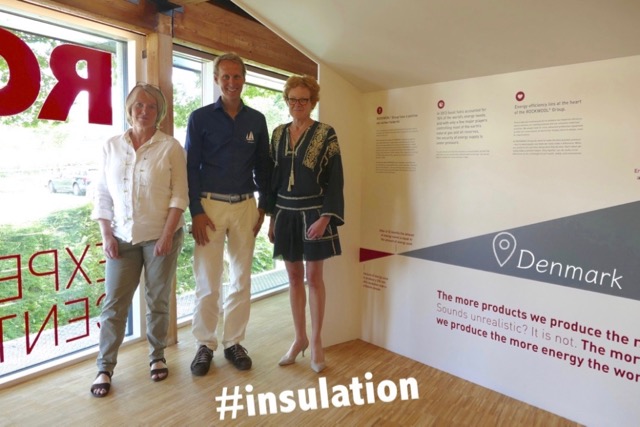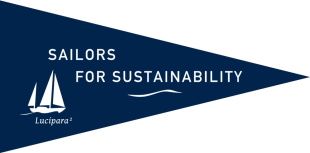A Warm Welcome
After a half-hour train ride and ten-minute walk from central Copenhagen we are welcomed by Rockwool’s Sustainability Manager Connie Enghus-Theisen and Head of Public Affairs Susanne Kuehn. They explain that the company is world leader in the field of interior, exterior, roof and technical insulation. As the name suggests, Rockwool focuses entirely on stone wool, which is made of ordinary stone.
“Those stones, they still have to be dug out, transported and processed. Doesn’t that take a lot of energy?” we ask Connie and Susanne. “True, but the energy used for is quickly compensated by the energy saved thanks to the insulation qualities of the end product.” Put differently, within 6 to 12 months the insulation saves as much energy as it cost to produce. After a year stone wool already makes a positive contribution.
Putting Stones to the Test
What about other types of insulation material, such as foam or glass wool? “Stones are widely available. Stone wool is completely recyclable, fire and moisture resistant. It is also safe to use and has superior insulation properties. That makes it very versatile.” Connie explains. Clearly, Rockwool is convinced they produce the best insulation product.
We can test it ourselves in a separate part of the building, a kind of miniature science museum. We hold a stone wool plate made by Rockwool over a gas burner and turn on the heat. Nothing happens, it stays cold. It does not burn and no dangerous gases are released. This is perhaps even more important than the fire resistance, because most fire victims actually die from suffocation. We move to the next exhibit, where we get to pour water over stone wool. The water just drips off its surface. This water repellency is very important to us. We obviously do not want moisture to remain in the Rockwool, as it would affect the steel hull of the boat. Finally, we enter a sound room. Outside the room we hear the sound of children playing on a tape recording. Inside it’s quiet, the rock wool absorbs the sound. Another useful quality.


